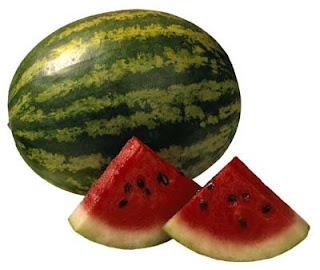 |
| Mangosteen Fruit |
Mangosteen has been used as a part of the traditional medicine of some Asian countries for a over longer period of time already.
Different parts of Mangosteen plant is used in treatment of some diseases. The named mangosteen, has nothing to do with mangoes. It is the fruit of evergreen mangosteen trees, which are natives to the southeast Asian countries. The fruits of purple mangosteen (Garcinia mangostana) of the genus Garcinia, turn reddish purple, when ripe. These fruits, which are almost round in shape are a little smaller than tennis balls in size. The rind of this fruit is bitter and so, is not edible. The inner edible portion is in the form of wedged segments and is white in color. The largest among the segments may carry the seed. The flavor of mangosteen is very unique and delicate. It can be explained as sweet, laced with a slight sourness. However, it is not the taste of the fruit, which is valued, but the various health benefits associated with it.
There were studies that Mangosteen is rich in nutrients and anti Oxidants
Below listed are some of its health benefits.
1. Anti-fatigue (energy booster)
2. Powerful anti-inflammatory (prevents inflammation)
3. Analgesic (prevents pain)
4. Anti-ulcer (stomach,
mouth and bowel ulcers)
5. Anti-depressant (low to moderate)
6. Anxyolytic (anti-anxiety effect)
7. Anti-Alzheimerian (helps prevent dementia)
8. Anti-tumor and cancer prevention (multiple categories cited)... shown to be capable of killing cancer cells
9. Immunomodulator (multiple categories cited) - helps the immune system
10. Anti-aging
11. Anti-oxidant
12. Anti-viral
13. Anti-biotic (modulates bacterial infections)
14. Anti-fungal (prevents fungal infections)
15. Anti-seborrheaic (prevents skin disorders)
16. Anti-lipidemic (blood fat lowering, LDL)
17. Anti-atherosclerotic (prevents hardening
of arteries)
18. Cardioprotective (protects the heart)
19. Hypotensive (blood pressure lowering)
20. Hypoglycemic (anti-diabetic effect, helps lower blood sugar)
21. Anti-obesity (helps with weight loss)
22. Anti-arthritic (prevention of arthritis)
23. Anti-osteoporosis (helps prevent the loss of bone mass)
24. Anti-periodontic (prevents gum disease)
25. Anti-allergenic (prevents allergic reaction)
26. Anti-calculitic (prevents kidney stones)
27. Anti-pyretic (fever lowering)
28. Anti-Parkinson
29. Anti-diarrheal
30. Anti-neuralgic (reduces nerve pain)
31. Anti-vertigo (prevents dizziness)
32. Anti-glaucomic (prevents glaucoma)
33. Anti-cataract (prevents cataracts)
34. Pansystemic - has a synergistic effect on the whole body
In Philippines, people used to make a decoction of mangosteen leaves and bark, which was beneficial in bringing down body temperature and also to treat thrush, dysentery, diarrhea and urinary disorders. By the eighteenth and nineteenth century, mangosteen was introduced to other parts of the world, but this tree in thrived in a very few regions, other than its native place. This fruit is sometimes referred to as the queen of fruits, due to its nutritional value and the presence of some compounds that offer various mangosteen health benefits.
It is said to be effective in preventing diseases, like, arthritis, cancer, osteoporosis, high blood pressure, atherosclerosis, kidney stones, cataract, glaucoma, Alzheimer's, neuralgia, etc. It is also said that this fruit can be effective in treating depression, aging, obesity, skin diseases, allergies, ulcers, diarrhea, fever, pain, and many others.

